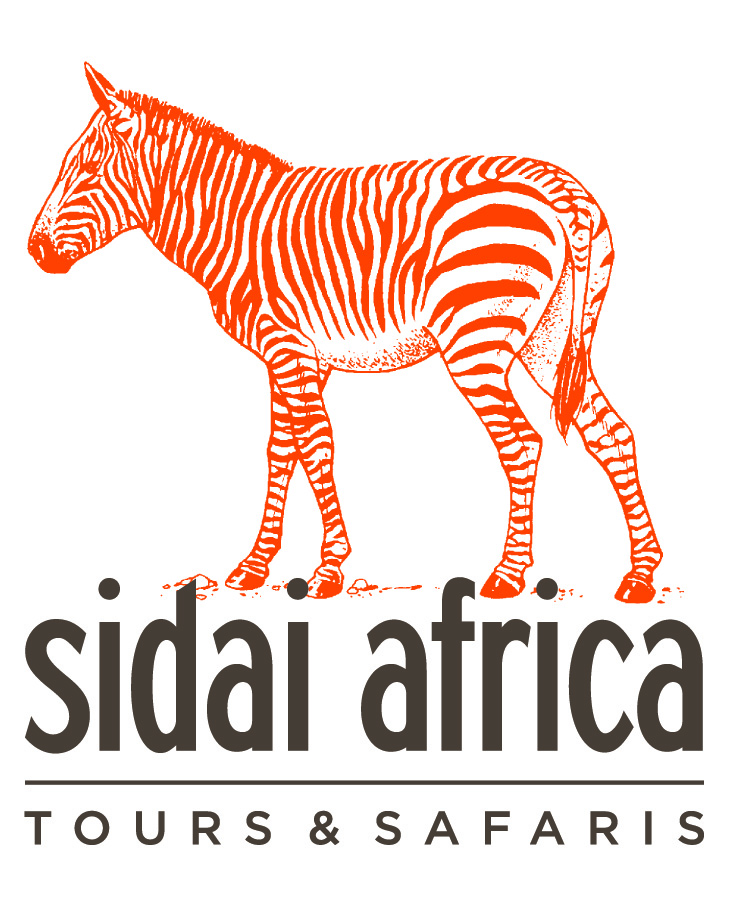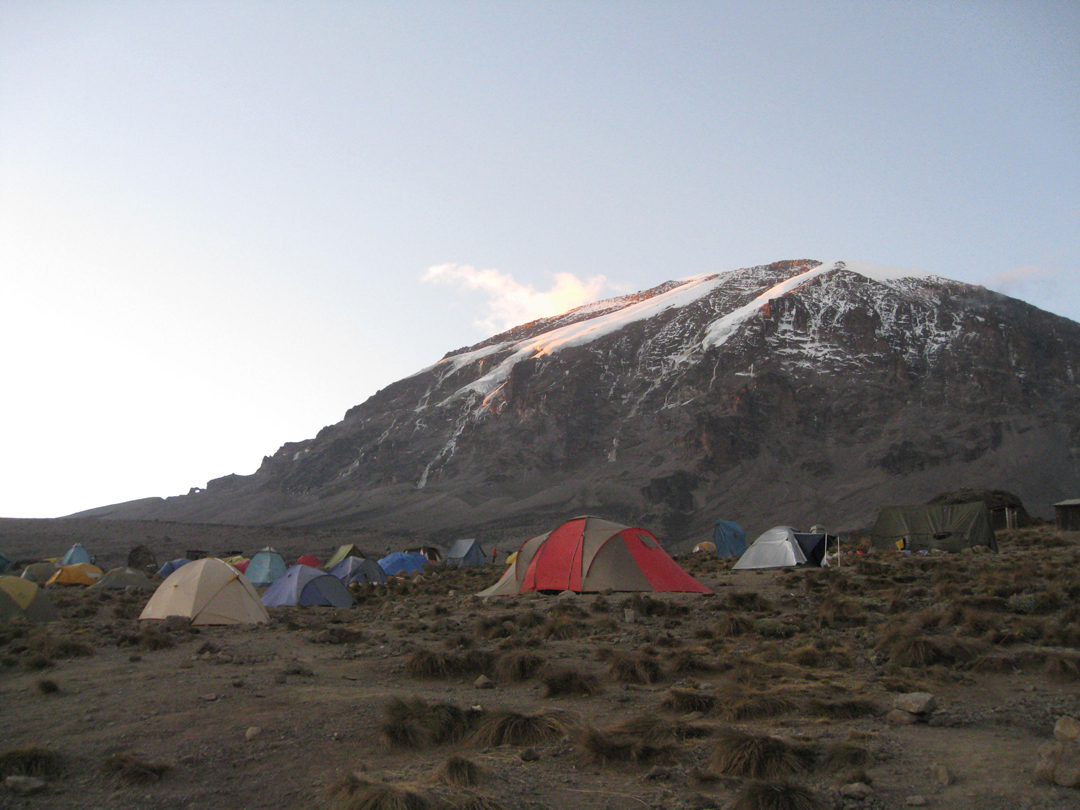

Kilimanjaro
KILIMANJARO
TREKS
Kilimanjaro
KILIMANJARO
TREKS
MOUNTAIN CLIMBING
When you choose hiking and trekking as a part of your Tanzania adventure, you have a multitude of destinations to choose from. We offer 2 exciting mountain climbing adventures: Mt. Kilimanjaro and Mt. Oldoinyo Lengai.
Physical Preparation for Climbing
Although no mountaineering experience is required on any of our climbs, a good level of physical fitness is necessary. You must be comfortable walking 6-8 hours uphill a day. They are certainly strenuous climbs so the better prepared you are, the more you should enjoy it. We recommend that in the months leading up to your climb you increase your physical fitness with aerobic exercise. Walking, running and stair-climbing will all strengthen your legs and improve your stamina.
Health Issues
Any climber who suffers from any cardiac or pulmonary problems should be cautious and should not attempt to climb the mountain unless they have consulted their physician.
MT. KILIMANJARO ROUTES
Kilimanjaro is the tallest mountain in Africa and is the highest free-standing mountain in the world. It is the only place on land where you can clearly see the curvature of the earth! It is a challenge, no doubt, but of the famous highest seven peaks in the world, this is the easiest to get to and the easiest to climb. It requires no technical climbing experience, and any moderately fit person can summit the mountain and feel the warmth of the sun rising over Africa, climbing slowly above the summit of Mawenzi and catching the glacial ice that accompanies you along the crater rim to Uhuru Peak 19,341 ft (5,895 m).
The average hiking day begins between 8-9am and is about 5 to 6 hours, walking very, very slowly. The distances you will hike each day are very moderate to acclimate a little at a time. Your guides will repeat over and over, "pole pole" which means "go slowly" in Swahili.
The hike to the summit starts around midnight depending on your route and speed of your group. You will go as high as you feel fit. Some people stop at the crater rim, and others continue to the very highest point on the mountain. Your guides will then take you down as quickly as possible to minimize any altitude problems. You will continue down past your last campsite to the next one for your last night sleep on the mountain before you get your certificate at the gate the next day.
CHOOSING YOUR ROUTE: Whether it is your first time to climb Kilimanjaro or whether you have climbed many other mountains, we encourage you to select the route that best suits you and make the most of your comfort and increases the chance of success to the top.
Rongai Route: This route begins at the northern side of Kilimanjaro. It walks through a true wilderness area towards Mawenzi Peak. The Rongai route is a steady ascent, and is favorite by those with little experience.
Lemosho Route: This route approaches the summit from the west by the lightly-used Lemosho route. It is considered to be easier and more beautiful than any other trail and it retains a real sense of unspoiled wilderness. It travels through forest and moorland from the west, crossing the caldera of Shira volcano and exploring the rock formations of the plateau.
The 8 day route gives a maximum time to acclimatization and also gives the perfect view of the glaciers on the crater rim, before joining with other routes and making the final ascent to the top.
Machame Route: This route approaches the summit through rainforest from the west and joins the other trekking routes before traversing beneath the southern icefields of Kibo. This is the most physically demanding route. The 7 day route gives a maximum time to acclimatization, and also gives the perfect view of the Barranco walls.
Marangu Route: This is the most popular ascending route and is perfect for those with no camping experience. It is the only route that has the luxury of sleeping in huts and with evening meals taken in a communal dining area.
GUIDES AND PORTERS
Qualified and experienced guides
Guides are compulsory for all routes on Kilimanjaro. All of our treks up the mountain are lead by highly trained and qualified guides, registered with the Kilimanjaro National Parks Board. Each of our guides has been carefully selected based on experience, safety record and through feedback from previous clients.
Support staff ratios
The average ratio of our support staff to climbers is 2 to 3 porters per hiker and two guides for a maximum of 4 hikers. This excellent staff to clients ratio, bolstered by our support equipment, will ensure your safety and enjoyment on the mountain.
Porters and cook
The porters do not only transport your gear and the supplies up and down the mountain. Arriving at every camp site long before you, they will have already put up your tent on your arrival. In the evening they will also boil drinking and washing water and the cook will prepare dinner of a quality that has surprised many previous clients. Our porters are all part of the Porters Association and paid a fair wage.
Weight limits for porters
Remember that there is a weight limit of 32 lbs (15 kg) per climber, on the gear of each hiker to be carried. A soft duffel bag (barrel type) is preferred - as they prefer to carry the loads balanced on their heads and shoulders.
Tipping
This is a "compulsory tradition" on every Kilimanjaro climb. The exact tipping amount depends on group size and how many days were spend on the mountain.
The average recommended tip per group per day:
Chief guide – US $ 20 per chief guide per day from the group
Assistant Guide – US $ 12 per assistant guide per day from the group
Cook – US $ 8 per cook per day from the group
Porters – US $ 6 per porter per day from the group
ON THE MOUNTAIN
Go slowly
Go slowly - "Pole Pole" as they say in Swahili! This is also very important during your first days of climbing. Even if you feel well, slow down and enjoy the scenery. The biggest cause of altitude sickness is ascending too high too fast! The slower you hike to more time you give your body to acclimatize.
Drink enough water
Make sure that you drink at least 3 - 4 liters of liquid a day - preferably water. For your first day it is recommended that you take along fresh water, which may be purchased at the hotel in Moshi before your climb. REMEMBER! A functioning "body water balance" is one of the keys to a successful climb!
Walk high - sleep low
If possible and especially on your acclimatization day "walk high - sleep low" Try to do a short evening stroll to a higher altitude and then descend to sleep at the camp at a lower altitude. This is essential on your acclimatization day.
Climb light
Climb as lightly as possible; this becomes even more important on your summit night. Extra weight will slow you down and will also make breathing more difficult.
HEALTH ISSUES
Acute Mountain Sickness (AMS)
Acute Mountain Sickness is also referred to as "Altitude Sickness", and as the name indicates the illness is commonly encountered at exceptionally high altitudes, such as the summit area of Mount Kilimanjaro. AMS, once apparent, can be most effectively treated by immediately taking the affected person to a lower altitude. Often a drop as little as 500m will be sufficient. The symptoms of AMS include in the order normally experienced; headaches, nausea, anorexia, exhaustion, lassitude, rapid pulse, insomnia, swelling of the hands and feet and reduced urine output. Climbers can take precautions to at least minimize the severity of the illness, by maintaining a slow steady pace from day one, include an extra day of acclimatization at a high altitude and by drinking at least 3-4 liters of water every day. Preventative medicine is also available and you should consult your physician for specialist advice. Fluid build-up may cause a condition known as edema (or edema), which can affect the lungs (pulmonary), preventing effective oxygen exchange, or affect the brain (cerebral) which will result in the swelling of the brain tissue. The latter can be lethal if not treated immediately or if symptoms are ignored. Probably 70% of all people climbing Kilimanjaro will suffer to some extent from AMS. You should familiarize yourself with this condition and take preventative care. For more information on this sickness please click on the Action Guide to High Altitude.
Hypothermia
Hypothermia or exposure is the lowering of the body's core temperature. Once again prevention is the best cause of action. The correct equipment and clothing is critical in the prevention of Hypothermia. Do not allow your clothing to get wet from either rain or perspiration. View more information on properly layering your clothing to prevent hypothermia. The treatment of hypothermia is relatively simple. Get the victim into a sheltered area as quickly as possible, remove all wet clothing and place the victim inside two or three sleeping bags, preferably with another person to help heat the victim.
Sun related injuries
About 55% of the earth's protective atmosphere is below an altitude of 5000m. Far less ultraviolet light is being filtered out, making the sun's rays much more powerful, which could result in severe sun burning of the skin. It is strongly recommended to use a 20+ sun protection cream at lower altitudes, and a total block cream above an altitude of 3000m. It is also important to wear dark sun glasses preferably with side panels above 4000m in daytime and essential when walking through snow or ice. Snow blindness can be very painful, and will require your eyes to be bandaged for at least 24 hours.
PACKING LIST
CLOTHING
Sweat-wicking T-shirts
First layer
Long sleeve warm shirt
Underwear
Thermal long underwear
Gore-tex rain jacket
Smart wool socks
Hiking pants
Balaclava
Fleece hat
Fleece ear warmers
Fleece jacket
Fleece sweater
Down jacket
Walking boots
Hiking boots
Gore-tex ski gloves
Light gloves
GEAR
Sleeping Bag (Rated -25 degrees C/-10 degrees is recommended)
Day pack, for you to carry
Large duffel bag for porters to carry
Water bottles or Camelback
Trekking poles
Headlamp
Batteries - bring extra sets for headlamp/flashlight and camera as cold weather shortens their life
Binoculars
Pocket knife
Gaiters
TOILETRIES
Ear plugs
Toilet paper
Small towel
Soap
Toothbrush and toothpaste
Wet-wipes
Hand sanitizer
Lotion
Glasses, contacts, solution (take contacts out each night to prevent blurred vision)
Eye drops
Feminine products
FIRST AID
Ibuprofin, Aceteminophen, or Aspirin
Throat lozenges
Band-Aid
Moleskin/2nd skin
Sunscreen (SPF 15+)
Lip balm with sunscreen
Insect repellent
Disinfectant, Antiseptic cream
Diarrhea medicine
Antihistamines
Ace bandage
Sleep aid
Malaria pills (talk to your doctor)
Antibiotics (talk to your doctor)
Diamox (talk to your doctor)
OTHER
Plastic/zip-lock bags
Gatorade or other drink mix helps with taste and minerals.
Water filter or iodine purification tablets
Sun hat with brim
Sunglasses
Energy bars, snacks
Duct tape




